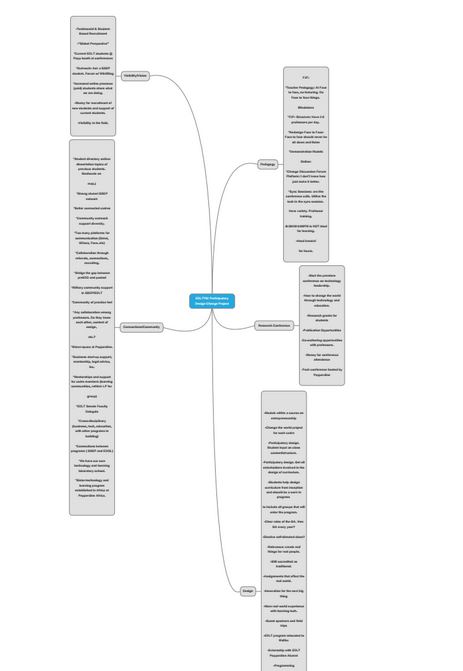Participatory Design Project~Brainstorming
Our team’s proposal was whittled down from a brainstorming session. Our brainstorming session applied Brown’s Brainstorming characteristics (Chapter 5), especially idea of “building on the ideas of others” and involved a whiteboard and colorful post-it-notes.* I initially suggested that we pattern our discussion after Brown’s 3 Elements of Successful Design: Observation/Empathy/Insight, and Mike suggested a broader essential question investigation. The result was a mashup of both ideas! Five categories emerged: Visibility-Pedagogy-Connections-Research Conference-Design.
To preserve the collective mind of our team two methods of data storage were employed. Molly keyed the text in a Google doc. Then, I transferred the data to a graphic organizer mindmap created via the MindMup web application. The result is two deliverables.
Here is a picture of the mindmap structure: (the text is too small to see, but can be expanded by clicking on the file attachment.)
Brown, T., & Katz, B. (2009). Change by design: How design thinking transforms organizations and inspires innovation. New York: Harper Business.




